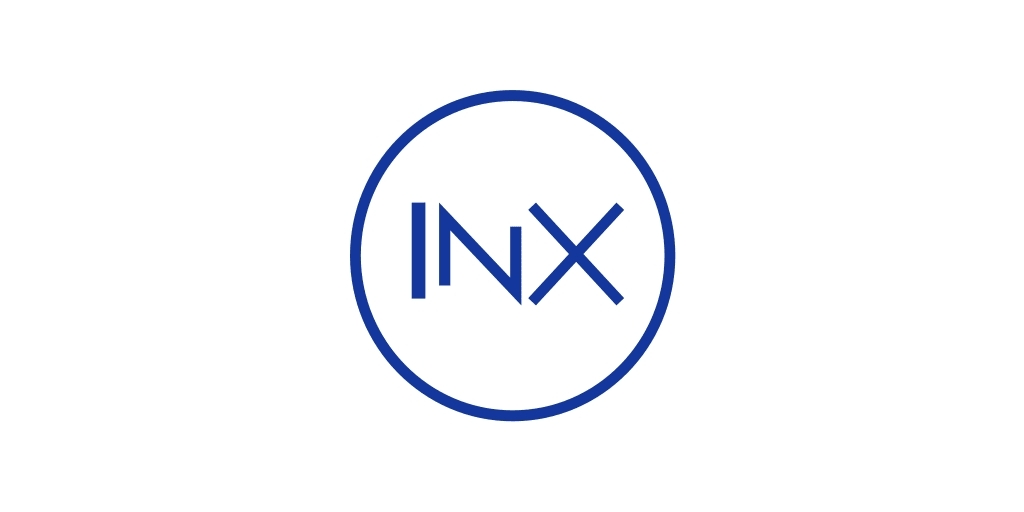Offering a distributed, open, and effective substitute for conventional approaches, the evolution of blockchain-based fundraising has transformed how startups and investors approach capital raising
Blockchain-based fundraising is the application of blockchain technology to help create, sell, and distribute digital assets for fund raising. Key turning points in the growth of blockchain-based fundraising came from the change from Initial Coin Offerings (ICOs) to Security Token Offerings (STOs). Originally the preferred approach for blockchain companies trying to raise money rapidly, ICOs were replaced with STOs as regulatory concerns and market volatility made a more safe and legal alternative.
Understanding the evolution of blockchain-based fundraising is essential for businesses, investors, and crypto aficionados negotiating this changing terrain, as this essay will show.
ICOs: The Dawn of Blockchain-Based Fundraising
As the evolution of blockchain-based fundraising unfolded, Initial Coin Offerings (ICOs) emerged as one of the first prominent methods for raising capital within the blockchain space.
An ICO is a fundraising model where a company or project issues digital tokens or coins in exchange for capital, typically in the form of cryptocurrencies like Bitcoin or Ethereum.
In many ways, ICOs mirrored traditional fundraising models like Initial Public Offerings (IPOs), except that they utilized blockchain technology, providing a more decentralized and global platform for fundraising without the need for intermediaries.
What Are ICOs?
ICOs are a method of raising capital by issuing tokens to investors in exchange for funding. These tokens are typically built on top of existing blockchain platforms, such as Ethereum, and can represent anything from a stake in the project to access to specific services or products.
Unlike IPOs, which are tied to equity in a company, ICOs often offer tokens that can be traded or used within the project’s ecosystem.
This enables startups to raise funds without selling shares in their company, making ICOs an attractive option for many entrepreneurs.
The Rise of ICOs
Between 2017 and 2018, ICOs were rather popular and the market saw an accelerated growth. More than $5 billion was raised through ICOs in 2017 alone, signifying a fundamental change in corporate approach to financing.
Prime examples of how ICOs gave entrepreneurs unheard-of access to money are successful initiatives like Ethereum, which raised over $18 million in 2014, and Filecoin, which raised over $250 million in 2017.
These initiatives not only supported the development of blockchain technology but also confirmed ICOs as a fundamental component in The Evolution of Blockchain-Based Fundraising.
But the difficulties of the ICO industry developed along with its expansion. Globally, regulatory authorities started to notice the lack of legal frameworks around these token offers, which set off a flood of investigation and legislative crackdowns.
Lack of clear rules along with several fraud and scam incidents like BitPetite and Centra Tech seriously reduced investor confidence.
Thus, in The Evolution of Blockchain-Based Fundraising, the ICO explosion gave way to a more regulated method that opened the path for Security Token Offerings (STOs) and other more safe models.
Challenges and Pitfalls of ICOs
The lack of regulation in ICOs presented one of the main difficulties since it resulted in legal uncertainty and doubtful results for investors.
Blockchain’s distributed character let projects gather money free from rigorous rules of conventional financial marketplaces.
Although this gave chances for creativity, it also let dishonest behavior and poorly carried out ventures vulnerable investors may find free access to.
The concerns were emphasized by the infamous Centra Tech ICO fraud, which promised a bitcoin debit card and subsequently attracted criminal prosecution.

These problems along with the growing regulatory pressure governments all across the world added helped the ICO market to drop.
The sector started to concentrate more on safeguarding investor protections and guaranteeing compliance with financial rules as The Evolution of Blockchain-Based Fundraising persisted.
Aiming to solve the issues that had dogged the ICO sector, this change finally resulted in the creation of STOs, which presented a more safe and legally acceptable substitute.
STOs: The Regulated Evolution of Blockchain Fundraising
As The Evolution of Blockchain-Based Fundraising advanced, Security Token Offerings (STOs) emerged as a more regulated and secure alternative to Initial Coin Offerings (ICOs).
STOs are a fundraising model where a company issues security tokens, which represent ownership or shares in the underlying asset, such as equity in a company, real estate, or other financial assets.
Unlike ICOs, which offer utility tokens with fewer regulatory requirements, STOs are subject to traditional securities regulations, providing a level of legal oversight and investor protection that was lacking in the early days of blockchain-based fundraising.
What Are STOs?
STOs are blockchain-based offerings that allow businesses to raise capital by issuing tokens that represent real-world assets, such as company equity, debt, or real estate.
These tokens are regulated as securities, meaning that they are subject to securities laws in the jurisdictions where they are offered.
This distinction makes STOs more aligned with traditional fundraising methods, such as IPOs, while still leveraging blockchain technology to enable greater transparency, security, and efficiency in the fundraising process.
The key difference between ICOs and STOs lies in the legal classification of the tokens—while ICO tokens are often considered utility tokens, STO tokens are treated as securities, offering more legal protection to investors.
Why STOs Emerged
The rise of STOs was largely driven by the demand for a safer, more regulated fundraising model. As the ICO market became flooded with unregulated and often fraudulent projects, investors began seeking more secure options.
STOs addressed this demand by ensuring that token offerings complied with existing securities regulations, which helped bridge the gap between blockchain innovation and traditional financial systems.
With STOs, blockchain startups could attract a broader range of investors, including institutional investors who were wary of the unregulated ICO market.
This shift is a crucial step in The Evolution of Blockchain-Based Fundraising, as it provides a way for blockchain-based fundraising to coexist with traditional finance in a compliant and secure environment.
Benefits of STOs
One of the main benefits of STOs is their legal compliance, which provides investors with greater security and trust in the investment.
By adhering to existing securities regulations, STOs help mitigate the risks of fraud and mismanagement that were rampant in the ICO market. Moreover, STOs offer the opportunity to tokenize real-world assets, such as equity in a company, real estate, or even intellectual property.
This asset-backed nature of STOs allows for more tangible value and increases investor confidence.
Additionally, STOs provide access to a broader pool of institutional investors, who often have the resources and experience to navigate complex financial markets but may have been hesitant to invest in unregulated ICOs.
Challenges of STOs
Despite their many advantages, STOs are not without their challenges. The primary challenge lies in the complex regulatory frameworks that govern security tokens.
Navigating the legal requirements for STOs can be time-consuming and costly, especially for smaller startups. Additionally, the preparation time for an STO is significantly longer compared to an ICO, as companies must ensure compliance with securities laws, which can vary by country and region.
This added complexity and cost may deter some startups from pursuing STOs as their fundraising model, despite the increased legal protections and trust they offer.
Nevertheless, as The Evolution of Blockchain-Based Fundraising continues, STOs are likely to play a key role in the future of secure and regulated blockchain-based capital raising.
The Broader Evolution of Blockchain-Based Fundraising
New fundraising models using blockchain technology are developing as The Evolution of Blockchain-Based Fundraising unfolds to provide decentralized, effective, and creative means for entrepreneurs and enterprises seeking finance.
These approaches push the envelope of what is feasible in blockchain-based fundraising while building on the lessons gained from ICOs and STOs.
Two instances of how the ecosystem is changing to satisfy the needs of investors and entrepreneurs are the arrival of Decentralized Finance (DeFi) and Initial DEX Offerings (IDOs).
Other Emerging Models
Within the realm of blockchain fundraising, Decentralized Finance (DeFi) is becoming a major player. DeFi, or financial systems run on blockchain technology, eliminate middlemen like banks and empower consumers over their assets.
Initial DEX Offerings (IDOs), which let projects issue tokens on distributed decentralized exchanges (DEXs), are a common funding technique available within the DeFi industry.
IDOs are carried out on a distributed network unlike ICOs, thereby offering more liquidity and openness. Although controlled platforms were common in ICOs, IDOs provide an open market where anybody may engage, so distributing capital.
The main distinction between IDOs and ICOs and STOs is their distributed character regarding the funding process.
While IDOs use distributed platforms where transactions and token listings are open and automated, ICOs and STOs depend on centralized entities—companies or organizations—to execute the offering.
Key component of The Evolution of Blockchain-Based Fundraising, this model fits the larger trend toward decentralization.
Non-fungible tokens (NFTs) are also becoming more and more important for fundraising since these original digital assets provide a fresh source of money. Offering a fresh approach for companies to access blockchain finance, NFTs can show ownership in a project or particular asset.
Current Market Trends
From speculative, technologically driven ideas to those supported by actual assets, The Evolution of Blockchain-Based Fundraising is showing a change as it advances.
Asset-backed tokens—which show ownership of real estate, equity, or intellectual property—draw investors in more and more.
Especially in view of institutional investors, this trend not only gives blockchain fundraising credibility but also offers a more safe investment choice.
Among institutional players seeking regulatory compliance and more investor protection, the acceptance of STOs keeps rising. Institutional investors are looking for chances to diversify their portfolios with legally compliant blockchain-based assets providing consistent returns as the industry develops.
This change is guiding The Evolution of Blockchain-Based Fundraising toward a more safe and controlled paradigm, therefore boosting institutional confidence in blockchain technology and creating the path for bigger-scale fundraising projects.
Case Studies of Successful Blockchain Fundraising Campaigns
Well-known case studies as the INX STO and the Polkadot ICO show how effectively blockchain fundraising techniques are used in practical settings.

Rising over $145 million in its ICO, Polkadot presented a novel blockchain interoperability solution that drew major interest from both institutional and individual investors.

In a same vein, INX’s STO raised $117 million providing fully compliant security tokens based on U.S. securities legislation.
These initiatives embraced regulatory compliance and institutional investment, therefore setting the stage for The Evolution of Blockchain-Based Fundraising, even as they showed the promise of blockchain fundraising.
The Future of Blockchain-Based Fundraising
Future innovation in blockchain-based fundraising is predicted to comprise hybrid models combining the finest elements of ICOs, STOs, and DeFi systems.
By combining elements of conventional venture capital, tokenized crowdfunding, and distributed finance, hybrid fundraising models could provide businesses more choices for raising money in ways that fit both investor tastes and regulatory systems.
Blockchain fundraising will be greatly shaped by the increasing focus on control and global collaboration.
The global regulatory scene will becoming clearer as nations all around establish more strong legal frameworks for blockchain technology, therefore facilitating the raising of funds by companies and the informed decision-making by investors.
In the end, The Evolution of Blockchain-Based Fundraising will keep changing conventional financial institutions, providing fresh routes for capital creation, more access to investment prospects, and worldwide improved financial inclusion.
How Startups and Investors Can Adapt
As the evolution of blockchain-based fundraising continues to progress, startups and investors must adapt to new trends, models, and regulatory changes in the blockchain fundraising landscape.
Understanding how to choose the right fundraising method and how to evaluate blockchain projects will be essential for success in this evolving space.
Both startups and investors need to be proactive, informed, and adaptable to navigate the complexities of the blockchain-based fundraising ecosystem.
Tips for Startups:
Choosing the Right Fundraising Model (ICO, STO, IDO, etc.) Startups should carefully evaluate the fundraising model that best fits their needs.
ICOs, STOs, and IDOs all offer different benefits and challenges. ICOs might be the easiest and cheapest option but come with greater regulatory risks.
STOs offer more legal protections and access to institutional investors but require more time and resources to set up. IDOs offer a decentralized platform and instant liquidity but may have a more competitive environment.
Understanding the evolution of blockchain-based fundraising and staying updated on market trends can help startups choose the most appropriate method to raise capital effectively.
Navigating Regulations and Compliance One of the most important steps for startups is ensuring that their fundraising efforts are compliant with local and international regulations.
This includes adhering to securities laws, tax regulations, and anti-money laundering (AML) requirements. Startups must be prepared to invest time and resources into legal consultations, as regulatory environments can vary greatly depending on the jurisdiction.
As the evolution of blockchain-based fundraising progresses, more clarity is emerging around regulatory requirements, but startups must stay ahead of the curve to avoid costly mistakes.
Tips for Investors:
Evaluating Blockchain Projects for Potential and Legitimacy Investors must be cautious when evaluating blockchain projects. With the rise of scams and fraudulent projects in the early ICO days, due diligence is essential.
Assessing the project’s whitepaper, the team behind the project, its use case, and its regulatory compliance status will help identify legitimate opportunities.
As the evolution of blockchain-based fundraising matures, investors must ensure they are investing in projects with sustainable business models and real-world value, rather than speculative ventures.
Diversifying Investments Across Blockchain-Based Opportunities Blockchain-based fundraising provides numerous investment opportunities across various sectors, including DeFi, NFTs, and STOs.
Investors should consider diversifying their portfolios across different types of blockchain projects to reduce risk and capture potential upside in various emerging technologies.
While the risks remain, the broadening scope of investment opportunities within blockchain-based fundraising offers exciting avenues for growth, helping investors take advantage of the continuous evolution of the industry.
Conclusion
When we consider the evolution of blockchain-based fundraising, the terrain has changed significantly over time.
Early days of blockchain technology’s excitement around ICOs has developed into a more controlled and safe environment with STOs, IDOs, and other creative funding sources.
We have looked at the main distinctions between ICOs and STOs, investigated new ideas like DeFi, and talked on the part that laws will play in determining the direction of blockchain-based fundraising.
For investors as well as businesses, the value of knowing the evolution of blockchain-based fundraising is almost impossible to overestuate.
While investors can better evaluate the validity and viability of blockchain-based prospects, entrepreneurs can make wiser judgments about how to get financing by keeping educated on market trends, legislative changes, and new fundraising strategies.
Startups as well as investors have to keep ahead of the curve as the blockchain ecosystem develops. Already under way is the next wave of invention; success depends on knowing and adjusting to these changes.
While investors should diversify their portfolios and perform extensive due research, startups should welcome the most suitable financing techniques.
Both sides can take advantage of the prospects given by the evolution of blockchain-based fundraising and set themselves for success in this fascinating and fast-paced environment by keeping informed, ready, and proactive.



